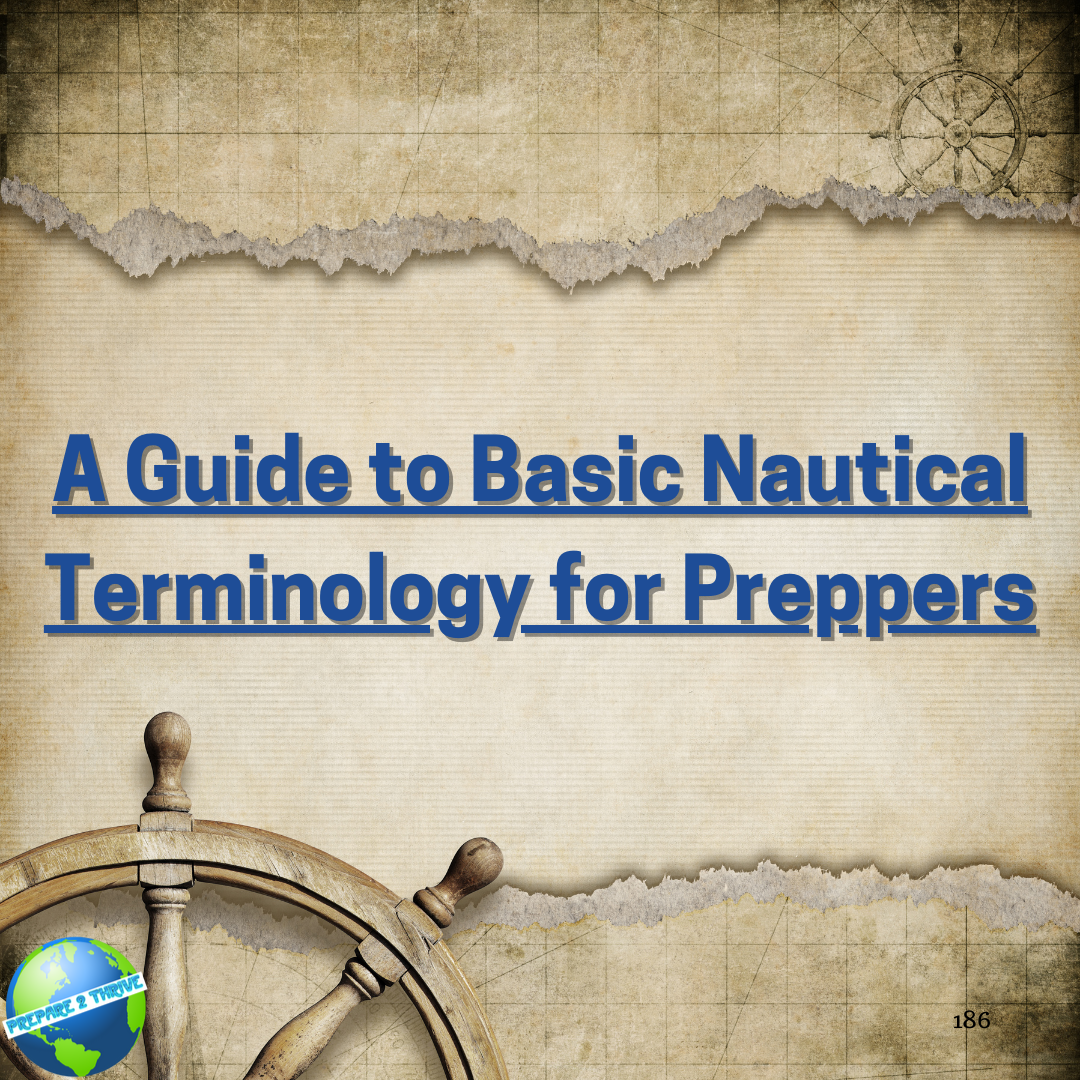Prepping for the worst - disaster, zombie apocalypse, economic collapse, you name it - is an increasingly popular hobby. As part of their prepping supplies, many folks become interested in acquiring boats. But boats come with a whole new set of terminology and concepts, which can be confusing to the novice. That’s why we’ve compiled this informal guide to some of the most basic nautical terminology and concepts you’ll need to know if you’re thinking about buying a boat.
Boating Lingo 101: Terms to Know
Mast
The mast is the vertical spar, or pole, used to support the sails, and it's one of the most recognizable features of a sailboat. Usually made of aluminum or wood, it's usually just a few inches wide, but can be much larger in larger boats.
Sails
Sails are the flat sheets of fabric used to capture the wind and provide power for the boat. Most common are triangular sails (also known as a triangle or Bermudan rig) but some boats may be equipped with other types of sails such as a genoa, a spinnaker, a jib, or a mizzen.
Rigging
Rigging is the system of ropes that connects and holds up the mast, sail, and other boat parts. A boat may be set up with a variety of different rigs depending on the type of boat and the type of sailing being done. Some common rigging terms include backstay, boom, shrouds, jib sheets, and halyards.
Keel
The keel is a long, shallow, protruding structure at the base of the boat, put there to provide stability and give the boat shape as it cuts through the water. On a sailboat, the keel also acts as a counterbalance to the sails.
Anchor
An anchor is a heavy metal weight used to take hold of the bottom of the water. There are many different types of anchors used on a boat, the most common being the plow anchor, the Danforth anchor, and the claw anchor. When prepping, you will need enough anchor line onboard to tie off the anchor, usually between 15 to 30 feet for a typical sailboat.
Boating Lingo 102: Basic Boating Concepts
Starboard and Port
Starboard and port are two terms that every boater must be familiar with. Starboard is the right side of the boat, and port is the left. The terms are reversed from what you'd normally expect since they originate from the nautical tradition of keeping the steering oar or rudder on the right side of the boat, so the person looking forward from the stern of the boat would be looking "port".
Windward and Leeward
These two terms have to do with the direction of the wind in relation to the boat. The windward side of the boat is the side of the boat towards the wind and the leeward side is the side of the boat away from the wind. The important point for preppers is to make sure you keep the windward side of the boat facing away from shore when you anchor, otherwise the pressure of the wind can drag the boat onto shore.
Headsails and Mainsails
Headsails and mainsails are the two main types of sails used on sailboats. Headsails are the smaller, triangular sails on the front of the boat, while mainsails are usually larger and square-shaped. Most boats will have both types of sails, and each is used in different conditions.
Beam and Draft
Beam and draft are two terms used to describe the size of a boat. The beam of a boat is its width, or its maximum distance from one side to the other. Draft is the depth of the boat, or the waterline to the bottom of the hull. These two factors are important to know when looking for a boat, and they have a direct impact on the boat's performance and maneuverability.
Heading, Tack, and Jibe
Heading, tack, and jibe are three terms used to describe the way a sailboat moves in relation to the wind. Heading is the direction the boat is pointed, tack is the direction the boat is traveling, and jibe is when the boat changes from one tack to the other tack.
Trim and Heel
Trim and heel are two terms used to describe how a boat is balanced. Trim is the vertical angle of the boat in relation to the keel, and occurs when the boat is leaning to one side or the other. Heel is the angular tilt of the boat in relation to the keel, and occurs when the boat is leaning to one side or the other. Having proper trim and heel ensures that the boat is balanced and that it has the best performance possible.
Conclusion
Nautical terminology can be daunting, but with a little bit of study and practice you will quickly learn the ropes (pun intended!). This guide will get you off to a good start, but to truly get the most out of your boat, there's no substitute for hands-on experience. A sailing course or a trusted mentor are invaluable resources for a new boat owner. Good luck and happy sailing!
#NauticalTerminology #BoatingBasics #PreppersGuide #Sailing #Boats #Anchors #Rigging #Mastsoles #Sails
